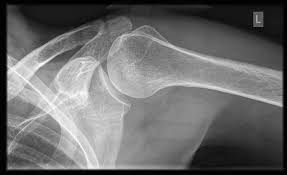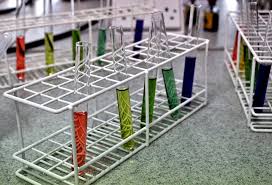I ran across an interesting recent article in the American Journal of Sports Medicine that takes a deeper look at what’s happening with frozen shoulder by zooming in to the molecular level. Watch the video below for a summary or if you prefer to read the summary just scroll down.

Researchers studied two groups of patients, 10 with frozen shoulder and 10 with stable shoulders.
Theory:
The theory is that there are “danger signals” called Alarmins that are endogenous molecules that get released into the extracellular milieu after infection or tissue injury. I love that term “extracellular milieu”. It’s really just a super fancy way to say the environment outside of the cell. And endogenous means “produced from within…so the alarmins are being produced from within the cells of the shoulder capsule, not caused by some external or environmental factor. These alarmins basically send the alarm that there has been cell and tissue damage.
Methods:
They obtained tissue samples from the innermost tissues of the shoulder (the capsule) and stained them with hematoxylin and eosin (H and E) dyes and then analyzed them by immunohisochemistry using antibodies against alarmin molecules . They then measured these immunoreactivities and graded them from weak to strong. In case you need a microbiology refresher, using H and E dyes just tells you that the cell nuclei get stained blue and the cytoplasm and extracellular matrix get stained various shades of pink, so that researchers can tell what they are looking at. And then they introduce antibodies (proteins that combine chemically with substances the body interprets as foreign) to check how strongly the alarmin molecules would “sound the alarm”.

Results:
The tissue samples from the frozen shoulder patients showed fibroblastic hypercellularity (way more than a usual number of cells that build tissue) and increased subsynovial vascularity (more blood flow in the shoulder capsule) compared with the control group. Also, the immunoreactivity of alarmins was significantly stronger in the frozen shoulder tissue samples. It’s also important to note that the expression of those alarmin molecules had a significant correlation with the severity of the shoulder pain reported by those patients.
Conclusion:
This study shows that, potentially, there is a role for alarming alarmin warning signals in frozen shoulder and that those molecules are associated with the patient’s shoulder pain. So what does this mean for us as chiropractors or alternative health practitioners? What are the next steps? Besides follow up studies with a larger control group, what do we do with this information?
Well, I can think of two things:
- There may be a link between immune reactions in the shoulder capsule and immune reactions in other places in the body. Eating a low-inflammation and low-immune reactivity diet may help you feel less pain. A good starting point is reading The Paleo Approach by Dr. Sarah Ballantyne, PhD. [Affliliate link] I can also help you create a custom diet plan as a result of my training in functional medicine.
2.Chiropractic adjustments have been proven to boost the immune system. If you are experiencing any pain or loss of range of motion from frozen shoulder, you may benefit from boosting your immune system overall. Please click here if you’d like to schedule an appointment.
References:
Alarmins in Frozen Shoulder: A Molecular Association Between Inflammation and Pain
First Published November 30, 2017
Photos: wiki commons
